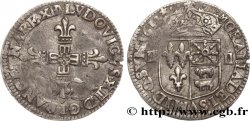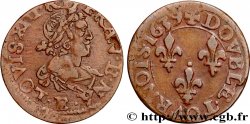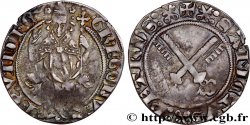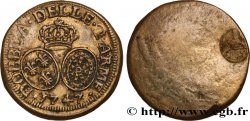Live auction - bry_400167 - LOUIS XIII Quart d'écu, à la croix fleuronnée, titulature côté croix 1612 Rennes
You must signin and be an approved bidder to bid, LOGIN TO BID. Accounts are subject to approval and the approval process takes place within 48 hours. Do not wait until the day a sale closes to register. Clicking on "BID" constitutes acceptance of the terms of use of cgb.fr private live auctions.
Bids must be placed in whole Euro amounts only. The sale will start closing at the time stated on the item description; any bids received at the site after the closing time will not be executed. Transmission times may vary and bids could be rejected if you wait until the last second. For further information check the Live auction FAQ
All winning bids are subject to a 18% buyer’s fee.
All winning bids are subject to a 18% buyer’s fee.
| Estimate : | 1 000 € |
| Price : | 680 € |
| Maximum bid : | 750 € |
| End of the sale : | 27 September 2016 16:25:28 |
| bidders : | 2 bidders |
Type : Quart d'écu, à la croix fleuronnée, titulature côté croix
Date: 1612
Mint name / Town : Rennes
Quantity minted : 107959
Metal : silver
Millesimal fineness : 917 ‰
Diameter : 30 mm
Orientation dies : 9 h.
Weight : 9,69 g.
Rarity : R3
Coments on the condition:
Ce quart d’écu est frappé sur un flan large et irrégulier. Petite faiblesse de frappe au centre de la croix du revers. Exemplaire avec d’assez hauts reliefs et recouvert d’une jolie patine grise de médaillier. Petite tache à 2 heures au revers
Catalogue references :
Predigree :
Exemplaire provenant de la collection L.G.
Obverse
Obverse legend : LVDOVICVS. XIII. D: G. FRAN. ET. NAVA. REX. 1612.
Obverse description : Croix fleuronnée avec quadrilobe en cœur.
Obverse translation : (Louis XIII, par la grâce de Dieu, roi des Francs et des Navarrais).
Reverse
Reverse legend : (MG) SIT. NOMEN. DOMINI. BENEDICTVM (MM) - 9, (LÉGENDE COMMENÇANT À 6 HEURES).
Reverse description : Écu de France couronné accosté de II - II ; lettre d'atelier à la pointe de l'écu.
Reverse translation : (Béni soit le nom du Seigneur).
Commentary
Monnaie inédite à ce type pour ce millésime, qui n’était connu pour cet atelier qu’au millésime 1611. Nous connaissons par ailleurs deux autres exemplaires, dont l’un issu du même coin de droit. En 1612, des quarts d’écu furent délivrés entre le 2 janvier et le 22 décembre. Les chiffres de frappe et de mise en boîte comprend une quantité très importante de quarts d’écu à la croix fleurdelisée. Le 2 du millésime est regravé sur un 1. Dans un article à paraître en fin d’année 2016, il sera démontré que ce type à la croix fleuronnée de Rennes fut frappé en 1611 et en janvier et peut-être début février 1612. L’utilisation de ce type, à Rennes, fut en effet interdit par un arrêt de la Cour des monnaies du 30 janvier 1612.
Unpublished coin of this type for this vintage, which was only known for this workshop in the 1611 vintage. We also know of two other examples, one of which comes from the same obverse die. In 1612, quarter ecus were issued between January 2 and December 22. The minting and boxing numbers include a very large quantity of quarter ecus with the fleur-de-lis cross. The 2 of the vintage is re-engraved on a 1. In an article to be published at the end of 2016, it will be demonstrated that this type with the fleur-de-lis cross of Rennes was minted in 1611 and in January and perhaps early February 1612. The use of this type, in Rennes, was in fact prohibited by a ruling of the Cour des monnaies dated January 30, 1612
Unpublished coin of this type for this vintage, which was only known for this workshop in the 1611 vintage. We also know of two other examples, one of which comes from the same obverse die. In 1612, quarter ecus were issued between January 2 and December 22. The minting and boxing numbers include a very large quantity of quarter ecus with the fleur-de-lis cross. The 2 of the vintage is re-engraved on a 1. In an article to be published at the end of 2016, it will be demonstrated that this type with the fleur-de-lis cross of Rennes was minted in 1611 and in January and perhaps early February 1612. The use of this type, in Rennes, was in fact prohibited by a ruling of the Cour des monnaies dated January 30, 1612







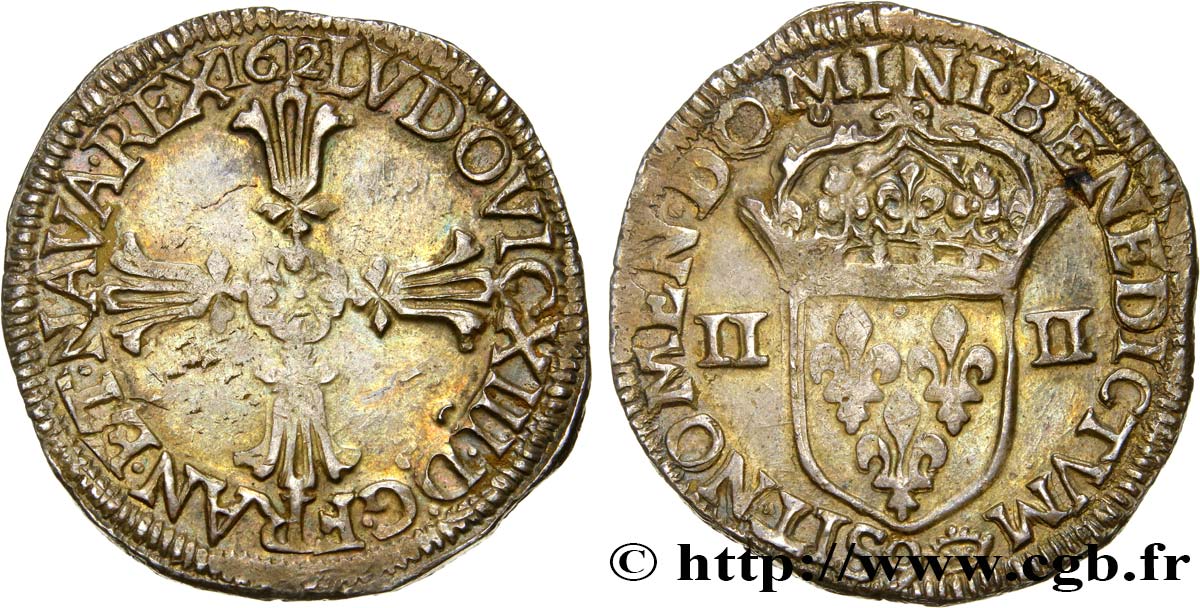
 Report a mistake
Report a mistake Print the page
Print the page Share my selection
Share my selection Ask a question
Ask a question Consign / sell
Consign / sell
 Full data
Full data

